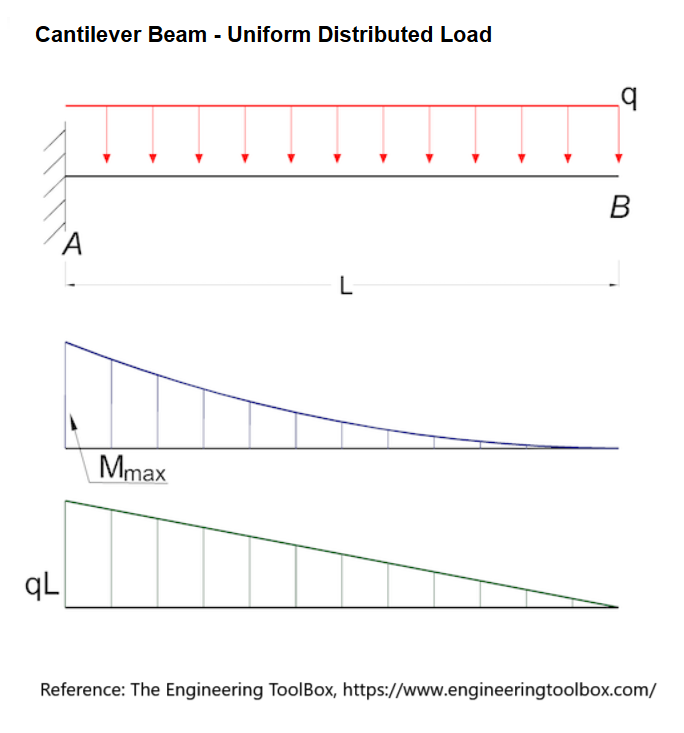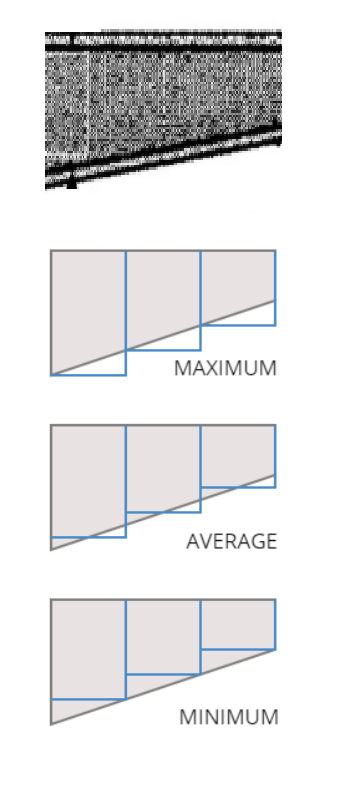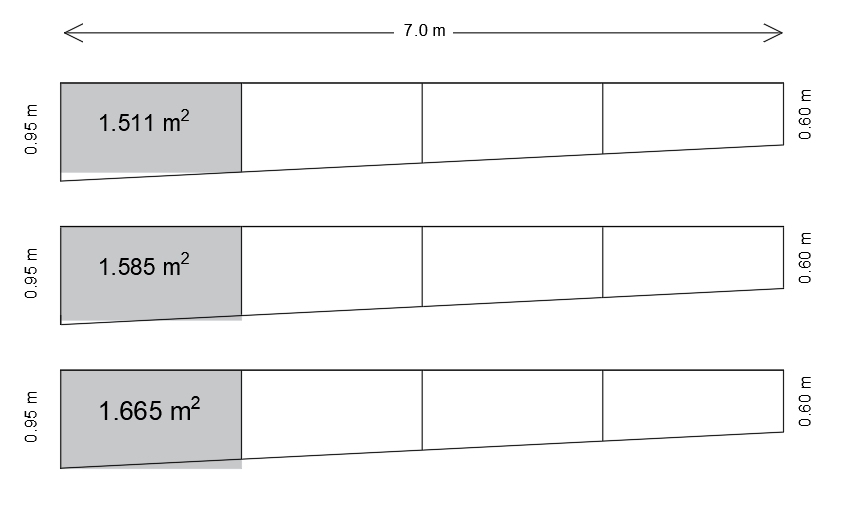Nonprismatic Section
Non-prismatic members are designed to use more material in areas where internal forces are greater and less material, and thus less capacity, in areas where internal forces are smaller. In other words, tapered sections attempt to follow the internal distribution of stresses and forces along the member.
To find significantly more economical solutions (10–30% savings), MKAPEB enables users to design structures using non-prismatic members.
In a cantilever beam subjected to uniform distributed load, the bending moment and shear force along the beam are shown below. As can be seen the values are maximum at the fixed end and are zero at the free end.

In this case, the fixed end of the beam demands the maximum capacity while the free end does not have any demand, for that reason, a tapered section can help to save material and efficiently use the available capacity.

A non-prismatic member has a varying cross-section along its length. Therefore, in the analysis procedure, the Non-prismatic members are broken into smaller segments.

To calculate the height of each section in each station and the area of each segment, several methods are introduced:

MkaPEB follows the average method, while other software may use the other valid methods. This may lead to slightly difference in the analysis results of the software. As shown in the figure below, the area calculated using the average method differs by almost 8%, and 4%from the area calculated using the minimum method in case 1, and case 2, respectively.
Case 1:

Case 2:

Created with the Personal Edition of HelpNDoc: Experience the Power and Ease of Use of HelpNDoc for CHM Help File Generation